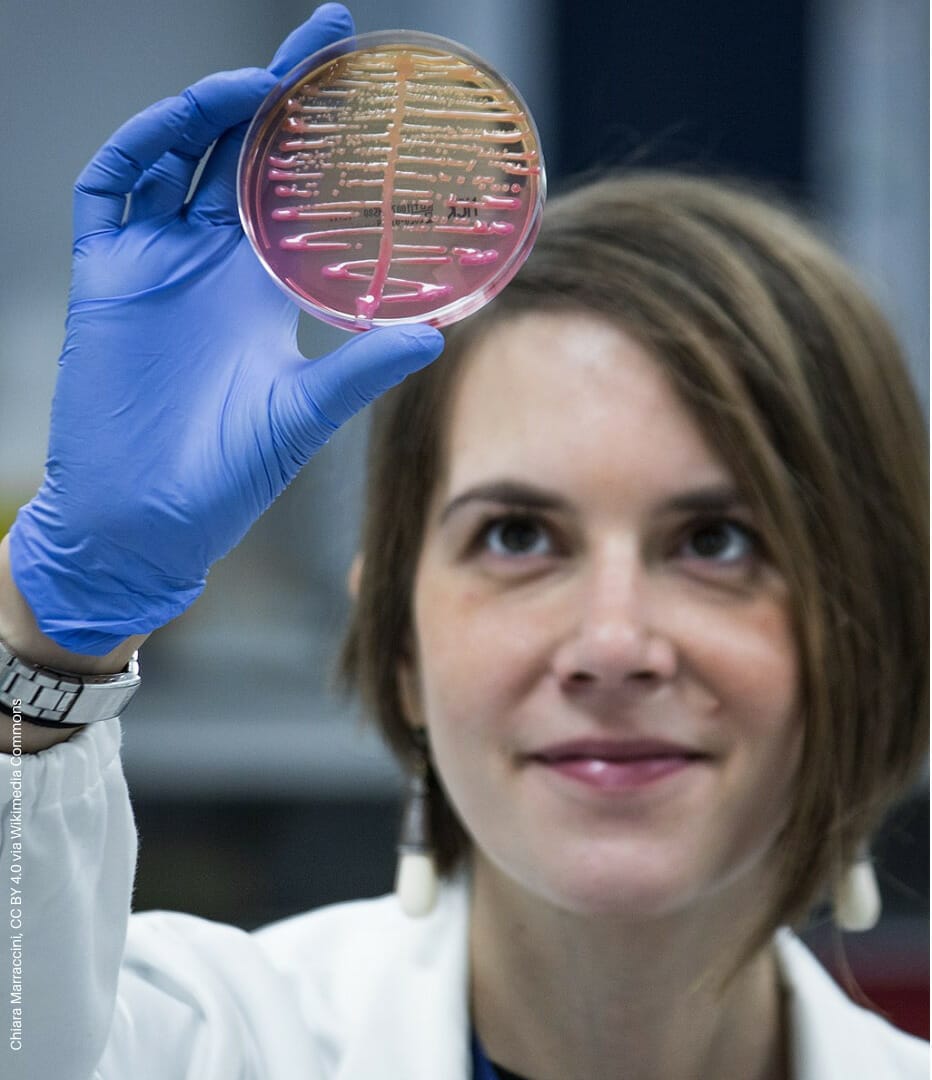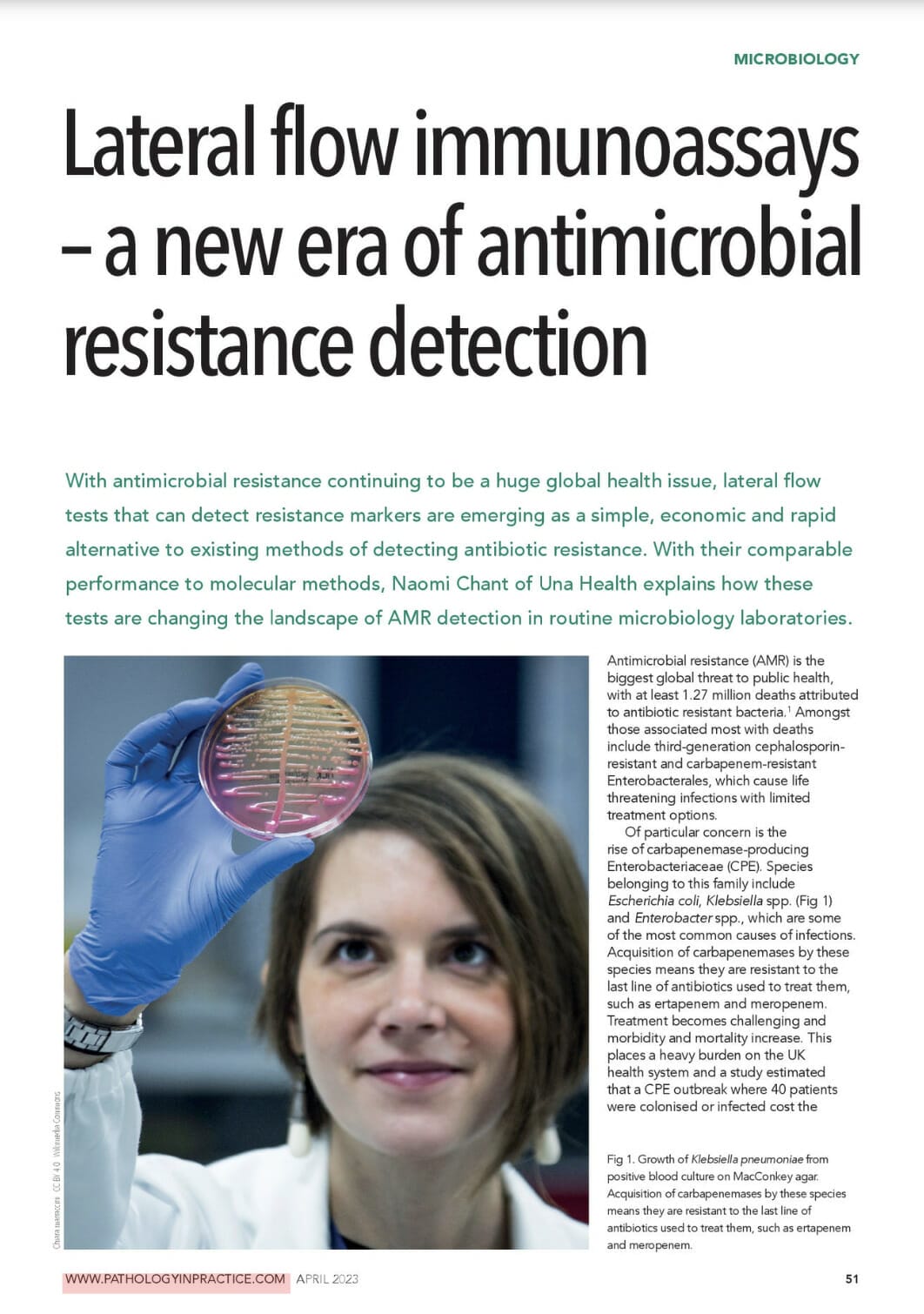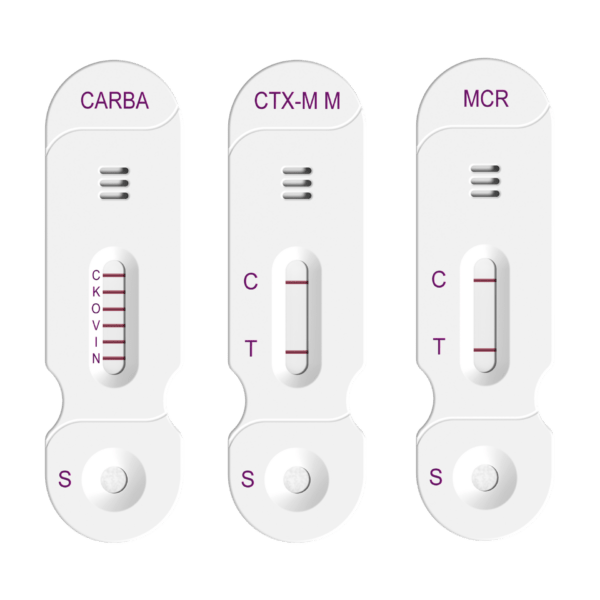
Lateral flow immunoassays – a new era of AMR detection
The rise of antimicrobial resistance (AMR) is a top ten global public health threat facing humanity, directly responsible for killing 1.27 million people worldwide.
Of particular concern is the rise of carbapenemase producing Enterobacteriaceae (CPEs), a group of microorganisms resistant to the last line antibiotics used to treat them. Almost all NHS hospitals have detected CPEs within their patients. Infections caused by such organisms have limited options for treatment and as a result mortality is high. Controlling AMR through effective detection and infection control measures is critical in reducing mortality and the financial burden AMR has on the NHS.
In recent years, multiplex lateral flow immunoassay tests have revolutionised AMR detection in the routine microbiology laboratory. This is discussed in a recent Pathology in Practice article written by Naomi Chant at Una Health. The article outlines how NG Biotech AMR tests enable earlier targeted therapy and the advantages they provide over other methods. There are over 100 publications on NG Test LFIA performance showing high sensitivity and specificity. These include comparison studies to other rapid tests and molecular methods. Some of these studies are highlighted in the article, including how the tests can be used to shorten TAT from blood culture samples.
There is a paradigm shift in the AMR workflow in the routine microbiology laboratory, with LFIAs becoming an increasingly important, cost-effective tool in the detection of resistance. It is now more important than ever to curtail the spread of AMR, and just how LFIAs became crucial in the COVID pandemic, they are now at the forefront of combatting the ‘silent pandemic’ of AMR.

Read the full article in Pathology in Practice – Lateral flow immunoassays – a new era of antimicrobial resistance detection (Page 51)

